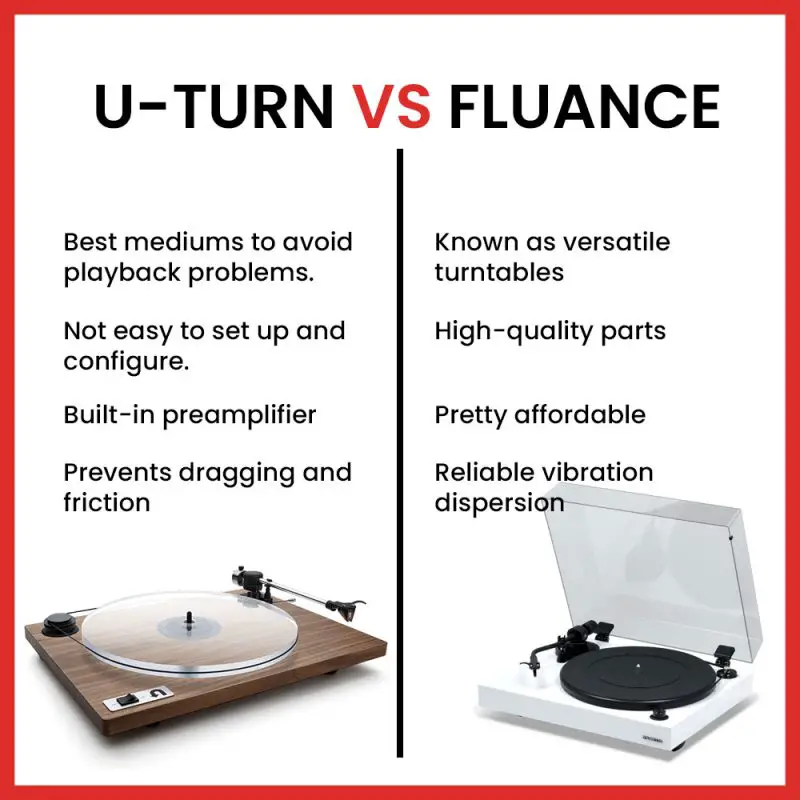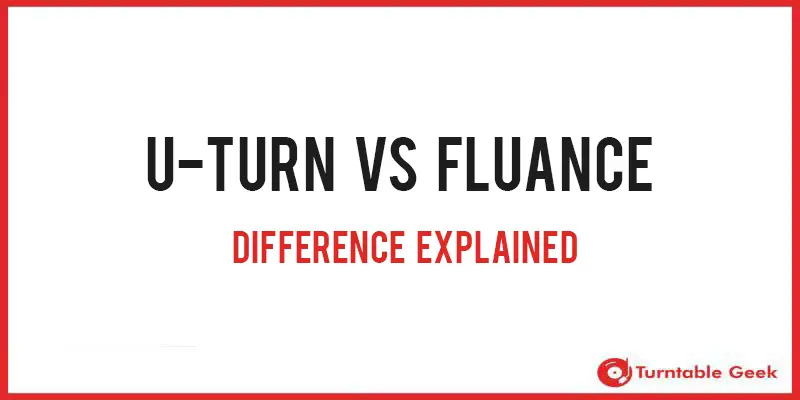When choosing turntables, it isn’t easy to distinguish between U-turn and Fluance devices. But it is not as difficult as you may think. By looking at the pros, cons, and features of both record players, you will be able to determine which one is the best turntable for you. Now you may be thinking about where to go to look at the details of these turntables? There is no need to go anywhere else. We will discuss the specifications and features of these record players and let you choose one of your preferences.
U-Turn Audio Player
U-Turn turntables are the best mediums to avoid playback problems that may occur during music playing. Whether you are a beginner or autophile, this record player is beneficial for all equally.
It’s not as easy to set up and configure this record player as it looks. The player has a built-in preamplifier, so you don’t need to connect it to the audio system to playback records. It provides smooth rotation, constant speed, and clarity and terminates unwanted resonance. Record tracking is precise with the tonearm with a counterweight that can be adjusted.
An Ortofon OM 5E cartridge is included with this turntable. Record rotation at a constant speed of 33.3 and 45 RPM is enabled by a belt drive that minimizes engine noises and vibrations. This is a device that prevents dragging and friction when the needle passes over recording grooves.
Fluance Record Player
Fluance record players are known as versatile turntables due to the brand. It’s a Canadian brand and has been producing high-quality turntables for decades. The company uses high-quality parts and highly-skilled engineers to make high-quality turntables. Turntables are designed with a unique look by the company.
It is revealed that the Fluance RT81 shares a lot of the same features as more expensive turntables. although it is pretty affordable.
You may check:
An aluminum tonearm with an S-shaped body features a sophisticated anti-rolling system that adapts to the plate shape when a moving magnet cartridge is attached to it. An aluminum platter and rubber slip mat are included with the RT81, which comes in a high gloss walnut finish. Solid MDF is used in the cabinet to provide more reliable vibration dispersion.
U-turn VS Fluance – Difference Explained

Conclusion
Audio playback is the primary purpose of the Orbit Plus Turntable by U-Turn Audio. You can use this model if you don’t take vinyl seriously yet, but you’re already aware of the value of good sound. You can even mount this player on the wall since it takes up little space. But this turntable is more expensive than others.
Like a record player of high quality, the Fluance RT81 specifications are traditional. In addition to reproducing vinyl records in good quality, the turntable also provides precise sound reproduction. Its high-end features allow the drive system to produce the musician’s performance in its original form, uncompressed. This turntable has all the premium features like the expensive devices, yet it is budget-friendly.
That’s why we conclude that if you are tight on budget, you should go for Fluance turntables. But if you are open to spending money, you can buy the U-turn turntables.
FAQs
Is Fluance a good turntable?
Fluance RT81 is quite good in terms of sound quality. There is a lot of detail, and the tonearm of the turntable tracks the records quite well. The phono preamp built into the turntable is quite good, but you’ll need to spend a lot more to get a better phono preamp.
Is the Fluance RT85 worth it?
Even if the RT85 is not the best record player on the market, it has a great feature set and is a great sonic player for sound enthusiasts or listeners looking for the best listening experience.
Does Fluance make a USB turntable?
A turntable that connects via USB can be less expensive, but the Fluance is your entrance into the world of amplification and speakers and the joy of listening to music.
What is audiophile quality?
Those who are audiophiles listen to audio quality that is considered to be of audiophile level. Sound and equipment designed for audiophiles are free of curves and coloration. High-frequency audio is unheard of by most people, so it’s called audiophile-grade audio.

